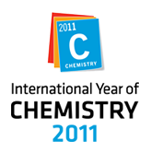
BURNING OF LITHIUM
Date
May 20
Purpose
To illustrate the three essential ingredients needed for fire
Discussion
Fire requires three essential ingredients: oxygen, heat and a source of fuel. In chemical terms fire is the division of the molecules of fuel material (wood, paper, gas, etc.) into smaller molecules. This process involves a rapid sequence of chemical bond separation and formation. The high reactivity of an unstable oxygen molecule (O2) is needed to break existing molecules to form the new bonds of the products of fire. Heat is required to start and maintain the fire.
Many compounds burn including lithium. Lithium is used for many purposes, including as a component of fireworks, because it burns with a bright red glow.
Method
Lithium will serve as the fuel that will be combined with heat and a source of oxygen to burn.
Experiment Report & Results
The purpose of the flame test is to show how easily the elements in the first column of the periodic table are ionized. The color generated when an element is burned is related to the strength by which electrons are bound to the atom's nucleus. A color that is red is low energy, indicating an electron that is weakly bound. A color that is yellow is slightly higher in energy, indicating an electron that is less weakly bound. Some elements, such as transition metals, when burned, give off colors that are of even higher energy that are not detectable by the human eye (eg. in the ultraviolet region of the electromagnetic spectrum). Red light has a wavelength of ~650 nm, yellow light has a wavelength of ~600 nm. Lithium produces red light when burned, Sodium produces yellow light when burned. These colors are photons that have different energy.
Using the equation c=vλ where c is the speed of light (=3x109 m/s), v is the frequency of light, and λ is the wavelength of light, and substituting v into the relationship E = hv , where E is the energy of the photon, h is Plank's constant, and v is the frequency of light, you can calculate the energy of yellow versus red photons (be sure to discuss with your class the use of consistent units when using these equations). This relationship between photons and matter provides scientists with incredible tools that enable the study of different materials. The ease with which a Lithium atom releases an electron, to become an ion, is why it is an excellent material to be incorporated into batteries. Another way of saying this is Lithium ion is an excellent conductor. This is why Salars, like the Salar de Uyuni in Bolivia, which has ~50% of the planet's economically recoverable Lithium, are so important to the international battery industry. This evening, three of the Youth Ambassadors, who were temporarily named Lithium, Sodium, and Potassium each burned samples of the same (see video).







